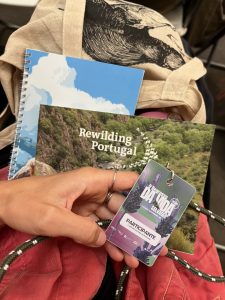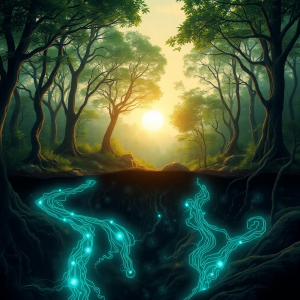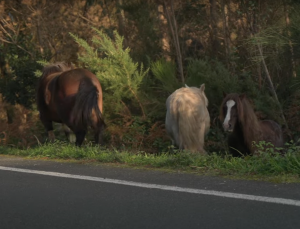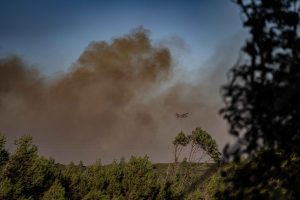It’s a late autumn afternoon in Mañón, northern Galicia. We’ve just finished filming for our first crowdfunding campaign and are making our way back to the house. Julius, who’s driving, suddenly stops and points excitedly at the road in front of us. Three horses shyly cross the road before vanishing into the thick brush. Siggi who had jumped out of the car with his camera but returned disappointed. There’s no point in chasing them for the perfect shot, these horses are wild and keep their distance from humans.
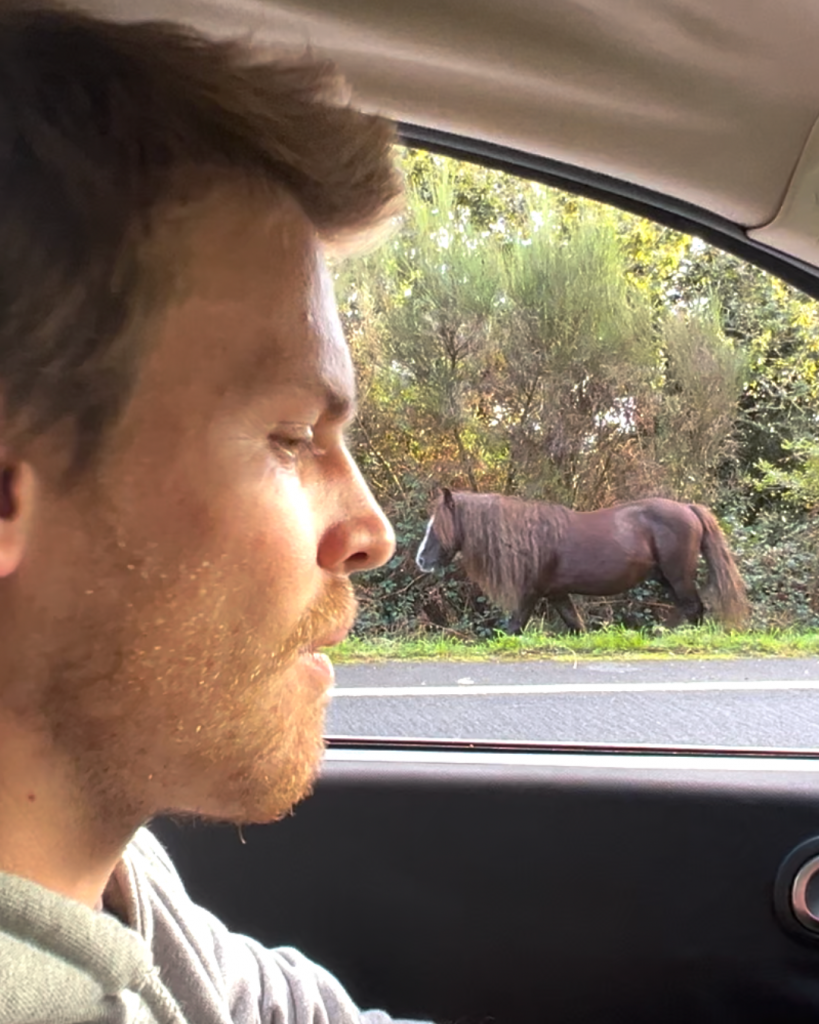
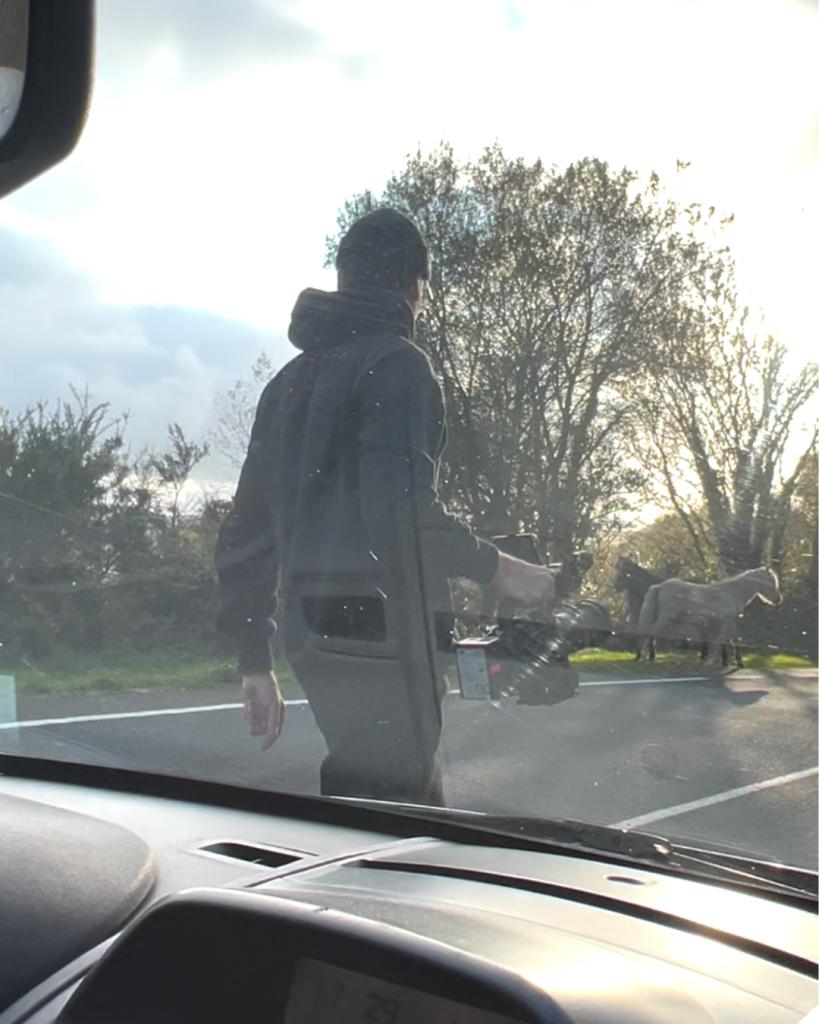
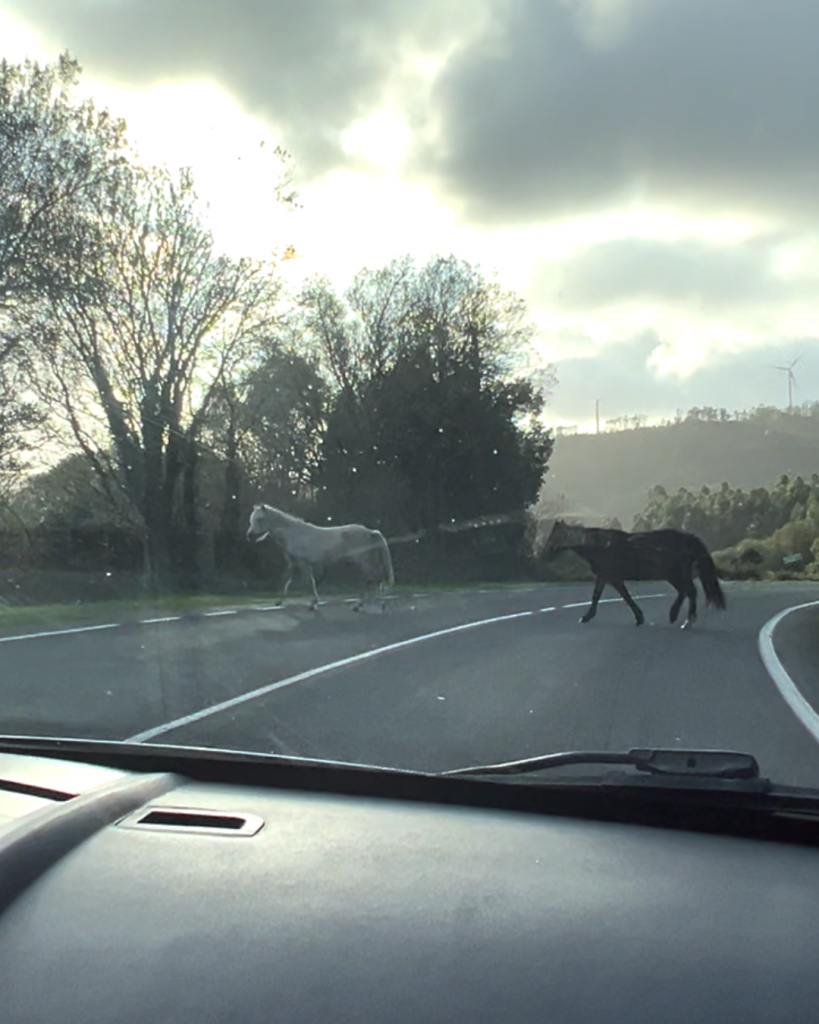
Well, to be precise, they’re semi-wild, as wild as horses can be in southern Europe today, but in Galicia, they’re more than wildlife. They’re woven into the region’s ecological fabric and cultural identity.
The Ecological Role of Wild Horses
Free-roaming horses and other large herbivores once played a vital role in shaping Europe’s landscapes. While that role faded from collective memory as their numbers declined, the rewilding movement has brought them back into focus. Projects like those in the Côa Valley in Portugal, led by Rewilding Portugal, are providing solid evidence of the ecological value these animals bring.
A recent study from the Côa Valley shows that horses:
- Prevent the overgrowth of flammable grasses and shrubs
- Maintain open, biodiverse mosaic landscapes
- Disperse seeds and fertilize the soil
- Create microhabitats by trampling dense vegetation
- Slow the spread of wildfires
- Support scavenger species through natural carcass cycles

A Population in Decline
While the horses in the Côa Valley are part of managed rewilding projects, many of Galicia’s wild horses still roam freely crossing through mountains, meadows, and villages. But their numbers are steadily declining. A study by the University of A Coruña shows, since 1970, the wild horse population has dropped from around 22,000 to just 10,000.
One of the main reasons for this decline is the shifting human relationship to the land, a relationship that has existed for centuries. Neolithic rock carvings already show the deep bond between people and wild horses in Galicia. For generations, these animals helped keep pastures open for cattle and provided a source of income through the meat of foals and horsehair, which was used for tools and brushes. In return, humans regularly tended to the herds and took on responsibility for their health and well-being.
But as urbanisation spreads and more people move away from rural life, the conditions that once made this relationship possible are disappearing. Caring for the horses has become more difficult and less viable. Today, products like horse meat and hair have little market value, making it economically unfeasible to maintain herds. At the same time, rural depopulation means there are simply fewer people left to take on that responsibility. Urban sprawl and infrastructure continue to fragment the landscape, pushing horses into increasingly dangerous areas. Vast eucalyptus plantations now dominate many regions but offer no forage for grazing animals. Roads have become deadly obstacles, with accidents involving horses becoming more common. And finally, strict EU regulations technically do not allow horses to be truly wild, every animal must have an owner, a passport, and regular veterinary care.
In theory, these rules aim to ensure animal welfare. But in practice, they place heavy financial and legal burdens on the few rural residents who still care for the horses. It’s a bitter irony: these animals provide meaningful ecological benefits to society at large, yet the responsibility, and the cost, of sustaining them falls almost entirely on the shoulders of a dwindling number of local people.
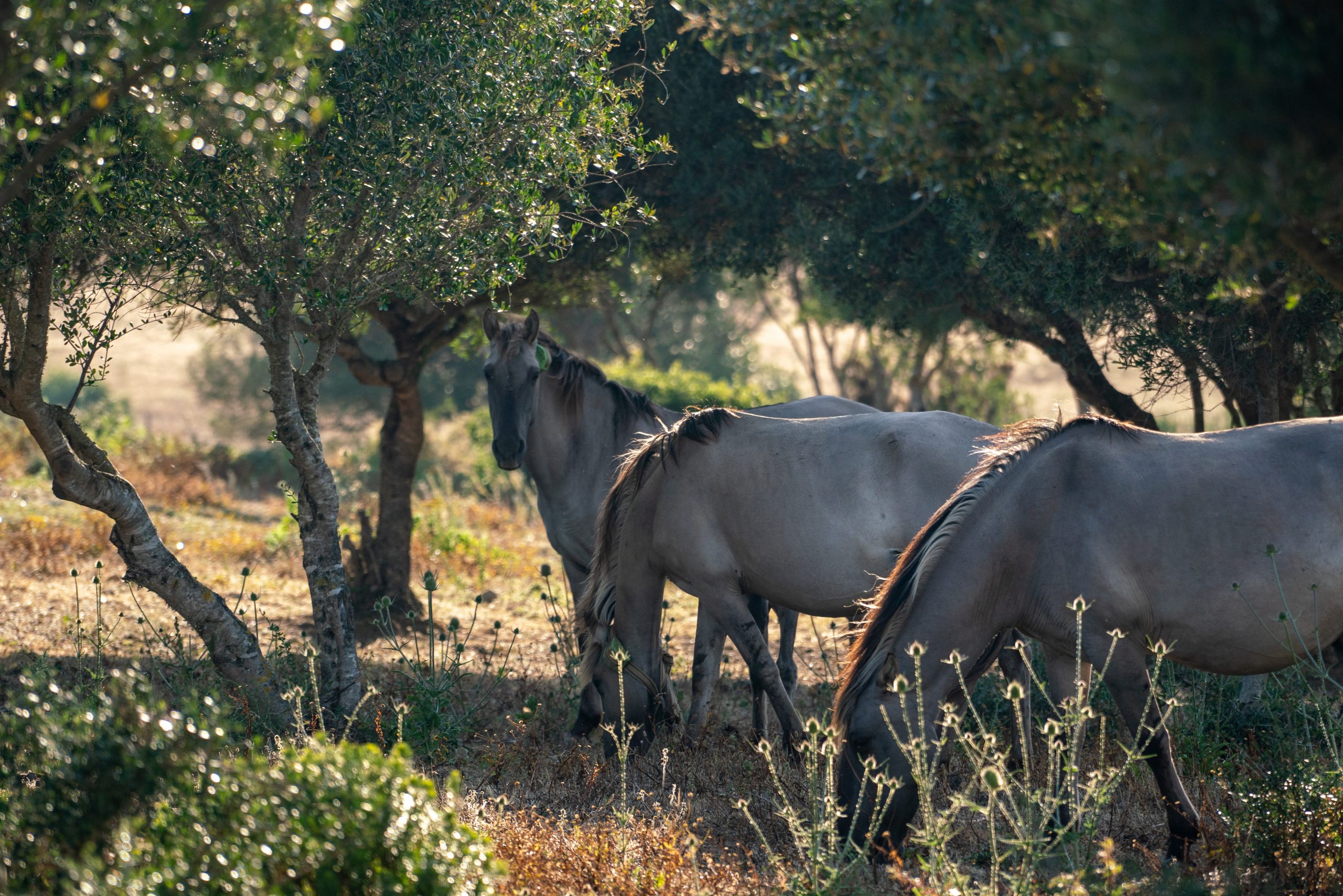
The Rapa das Bestas
Still, in some parts of rural Galicia, the ancient relationship between humans and wild horses survives. Locals known as besteiros care for and manage the horses, and once a year this connection becomes visible during the rapa das bestas. The event takes place across various Galician villages, with the one in Sabucedo being the most famous.
Just a few months after our successful crowdfunding campaign, we returned to witness the event and explore what it tells us about the future of wild horses in Galicia. When we arrived, Sabucedo was unrecognisable from the usual image of a quiet Galician village. Every house hosted gatherings and food stalls and local crafts lined the streets. Thousands of people filled the area, and in the nearby oak forest, a sprawling camp ground had popped up. A large stage featured live music well into the night. It definitely felt more like a festival than a livestock roundup. The next morning, running on too little sleep and feeling the remains of a little too much local beer the night before, we made our way to the arena.
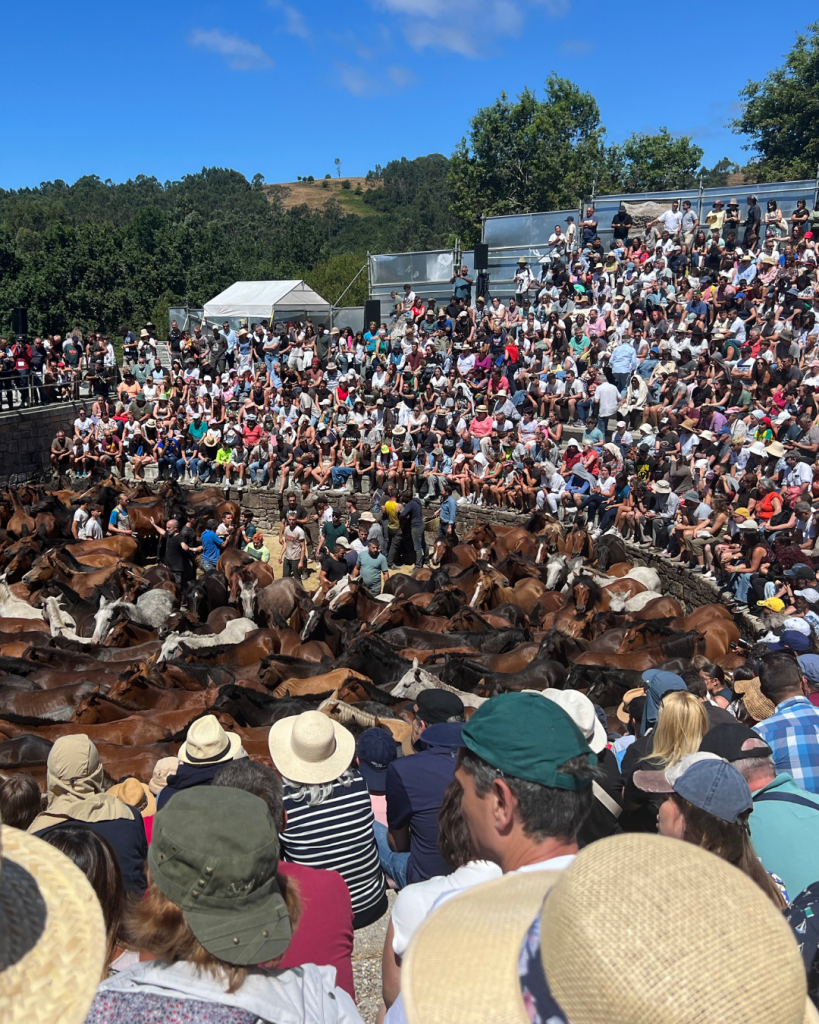
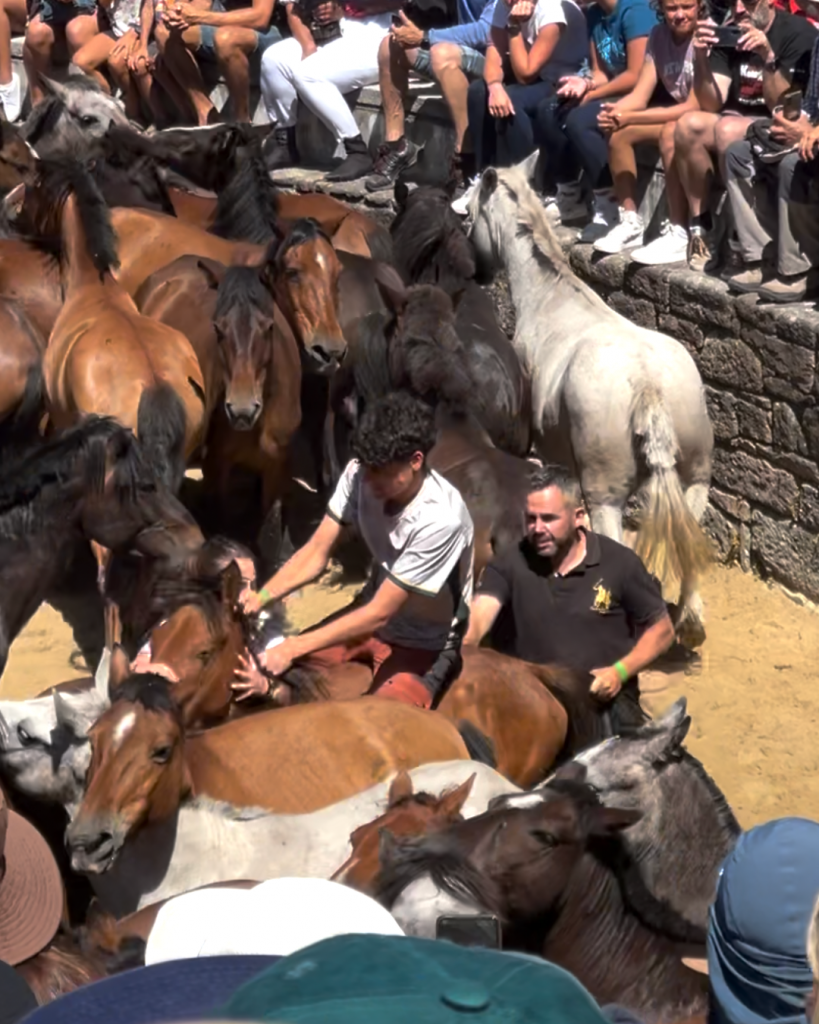
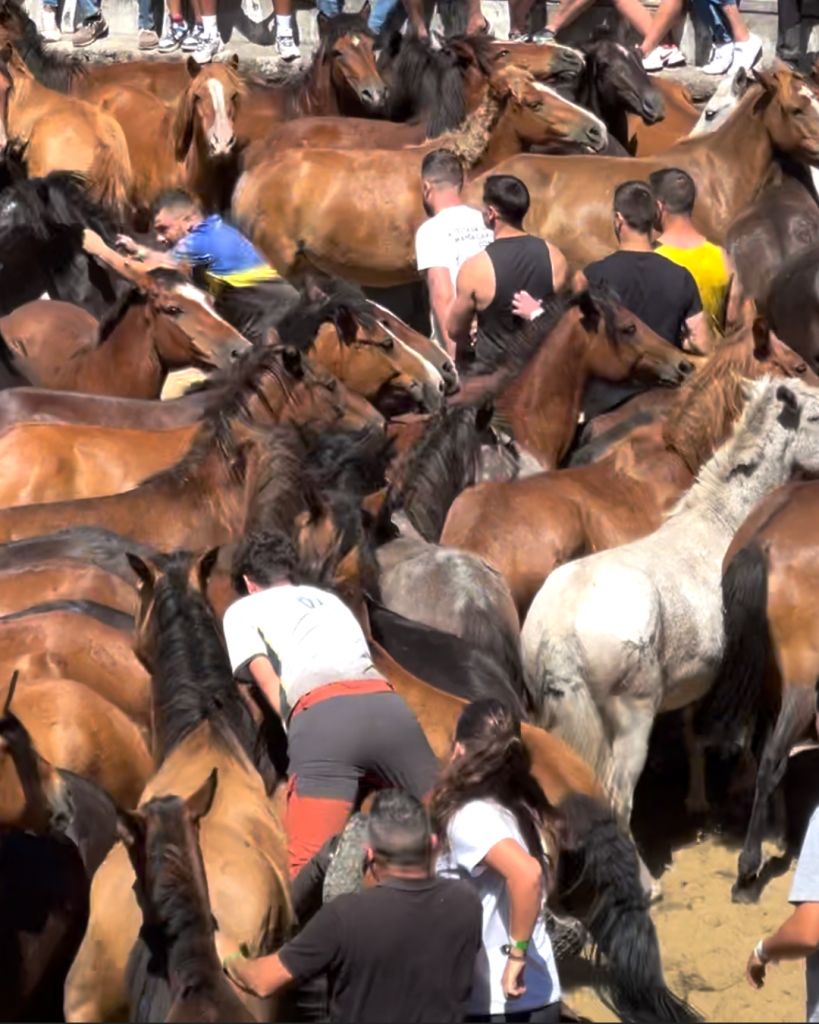
The rapa happens three times over the weekend. It starts traditionally with the local families: parents and children enter the arena to find and separate foals from the herd. Then, the adults take over. In teams of three, besteiros wrestle individual horses to the ground to cut their manes and administer deworming treatments.
It’s a risky job. The horses fight back. Injuries seem inevitable. The stress for the animals is obvious, and one can’t help but wonder if there’s a less traumatic way to conduct these annual treatments. But would a quieter version attract the same crowds? Would it still bring in the money needed to maintain the herds?
An Opportunity for Conservation?
It’s fair, and important, to debate the ethics of the rapa. But in the context of rewilding the cultural structure that still exists around wild horses in Galicia could offer a unique opportunity for rewilding.
One of the biggest challenges of rewilding with large animals is that, in most of Europe, they can’t be fully wild. Legal and practical frameworks require human care and oversight. But if rewilding is to succeed long-term, management must become lighter over time. Introducing horses into landscapes without long-term capacity to manage them poses a serious risk to many projects. This is where Galicia could lead the way.
If local communities were trained, supported, and fairly compensated to maintain semi-wild herds for conservation purposes, they could provide the continuity many rewilding projects struggle to secure. Moreover, modern societies often see wild horses as alien or even threatening. Without lived experience or cultural memory, people are unsure how to respond to free-roaming animals. In Galicia, that cultural memory is still alive and celebrated.
These communities could be living examples, offering practical insights into regulation, behavior, and management. They show what works, what needs adjusting, and where barriers still lie.
What Needs to Change
To scale up this approach, some key things need to shift:
- Financial support for communities maintaining herds—not reliant on meat or hair products
- EU legislation must recognise semi-wild horses and adapt livestock rules accordingly
- Compensation and insurance schemes should cover property damage, road accidents, and wolf predation
- Legal clarity on ownership, vet care, and death reporting for semi-wild animals
- Payments for ecosystem services like fire prevention and biodiversity conservation
Looking Forward
Galicia’s wild horses, and the people who care for them, offer a model for resilient, culturally rooted conservation. This isn’t about romantic nostalgia. It’s about recognising value where it already exists, and supporting it in a way that benefits everyone.


